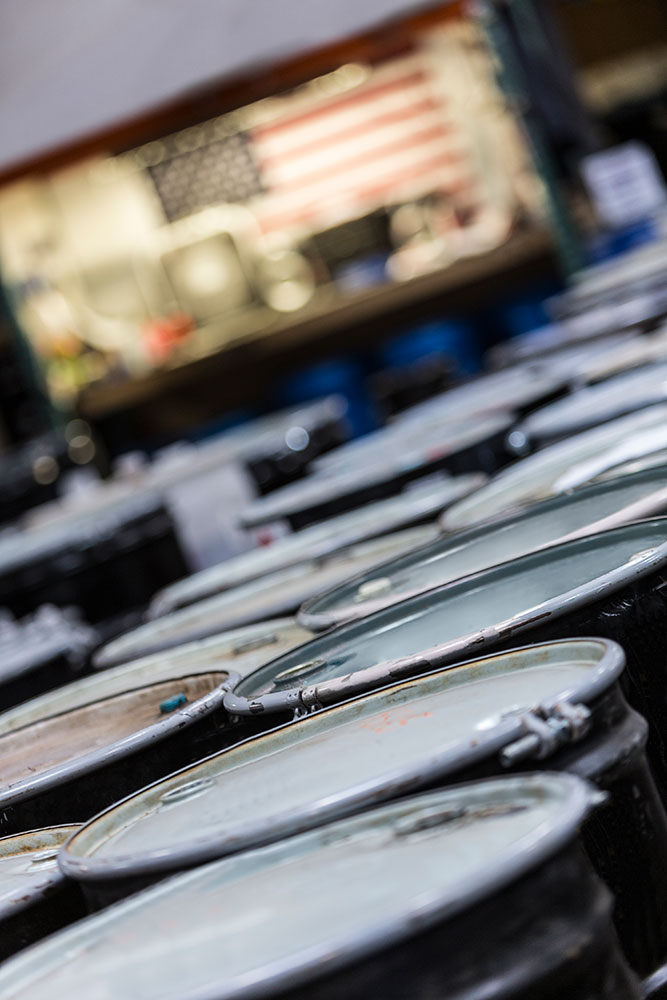Every manufacturing process leaves behind waste. What is your facility doing with these materials when they can no longer be used?
By Kurt Schmidt, Clean Earth Regional General Manager
Every manufacturing process, from food to consumer packaged goods, automotive and more, leaves behind waste, but much of this left-over material can be put to productive and profitable use. Many of the waste materials that are generated in the manufacturing process, including paper, plastics and metals, can be recycled and recovered. Additionally, day-to-day operational items, from light bulbs to computer monitors, used paint, batteries and paper, need to be considered in recycling plans. What is your facility doing with these items and materials when they can no longer be used?
While manufacturing facilities have great potential for recycling opportunities and positive returns on those efforts, they often postpone or disregard the benefits. The preliminary steps of gathering data to develop a recycling plan can feel like a daunting task for manufacturers, particularly at large-scale facilities. However, generally, the larger the job is for preparation, the greater the paybacks. For this reason, the implementation of recycling programs at manufacturing facilities is becoming more common.
There are numerous opportunities for enacting recycling at manufacturing plants regardless of facility size. This article highlights a few essential steps and ideas to keep in mind when creating a plan to expand recycling in the manufacturing process and create a lasting approach to sustainability practices.
When choosing a hazardous waste management vendor, be prepared to fill out a critical hazardous waste profile sheet that will require a list of all chemical properties of the particular type of waste that is being produced. Once completed, the manufacturer’s vendor will then be able to identify what can be recycled and what can be used for waste to energy. Some vendors can then help guide the customer on what is recyclable and what is not in addition to providing guidance on how to best manage byproducts during the recycling process.
For example, customers might be using a particular solvent that includes a chlorinated compound that would eliminate it from being recyclable. To help avoid this situation, one recommendation for customers is to first reach out to the manufacturers of the chemicals to identify what materials are being used and what the alternatives might be, if needed, for recycling. This step alone can help streamline the recycling process, and in this example, identify a solvent that’s recyclable.

Rather than sitting on barrels of waste, consider how this left-over material can be put to productive and profitable use.
Initial questions that customers can ask of themselves include, “Are there materials being used that can be recycled downstream?” And if not, “Are there alternative recyclable materials?” When determining what products or materials can be recycled, it truly depends on what supplier is being used for materials. Some suppliers are focused on being green, so they might opt to ship their cargo boxes as opposed to transporting in plastic containers that may not be recyclable. Customers can work closely with their provider so they can choose the materials that would be best for recycling. With this proactive approach, they can see what the end result will be for the byproducts.
In addition, consider the potential complete reuse of byproducts. While materials might not be recycled back to their original form, there could be opportunities to reuse byproducts as an alternative fuel for a cement manufacturing plant, as an example. As manufacturers are continuously looking to expand their green footprint, aim to go the route of recycling material if at all possible as landfills and incineration should be a last resort option.
Often, the best organizational external practices begin with internal implementation and improvements. Spend time examining operational products and materials like computers, bulbs, used paint and paper. For example, when computers are used, they eventually become outdated and are replaced. What is being done with old monitors, cables and switches? These kinds of recycling needs can also be discussed with the manufacturer’s vendor.
Manufacturers that encourage recycling among their staff could result in a practice that encourages them to bring in household products, like old batteries, to be recycled as well. Ultimately, having an economic sense is critical for manufacturers that place recycling and sustainability as a key goal.
Recycling reduces the costs that would otherwise be incurred when disposing of unused materials and byproducts. Manufacturers and distributors can benefit from creative, sustainable recycling and reuse opportunities, including:
Look to experts to provide guidance on what materials and products you have and what alternative disposal or recyclability methods are available. Vendors can help guide the customer on what is recyclable and what is not in addition to providing guidance on how to best manage byproducts during the recycling process.
When it comes to public perception, today’s leading manufacturers know that sustainable business practices are no longer a trend, they are a necessity. Consumers are increasingly focusing on sustainability and environmental responsibility to help them form opinions of—and relationships with— brands of all types. Even in the face of a crisis, failing to consider environmental impact can result in more than a regulatory fine, it can also impact brand perception.
According to a global survey, 69% of respondents in North America said it was extremely or very important for companies to prioritize improving the environment. And because the manufacturing sector has a sizable global footprint, it is that much more critical for the industry to work toward implementing lasting recycling practices.

Kurt Schmidt
About the author
Kurt Schmidt is the Regional General Manager for Clean Earth and has over 18 years of experience working for the Harsco Corporation. Clean Earth’s vision is to create a better future for our people, partners, and planet by turning specialty waste into recycling opportunities. It is one of the largest specialty waste companies in the United States, providing remediation, disposal, recycling, and beneficial reuse solutions for hazardous and non-hazardous waste and contaminated materials.
Contact: kschmidt@harsco.com
Facebook: https://www.facebook.com/cleanearthsolutions
Twitter: https://twitter.com/CleanEarthInc
LinkedIn: https://www.linkedin.com/company/clean-earth-inc-/
In this episode, I sat down with Beejan Giga, Director | Partner and Caleb Emerson, Senior Results Manager at Carpedia International. We discussed the insights behind their recent Industry Today article, “Thinking Three Moves Ahead” and together we explored how manufacturers can plan more strategically, align with their suppliers, and build the operational discipline needed to support intentional, sustainable growth. It was a conversation packed with practical perspectives on navigating a fast-changing industry landscape.